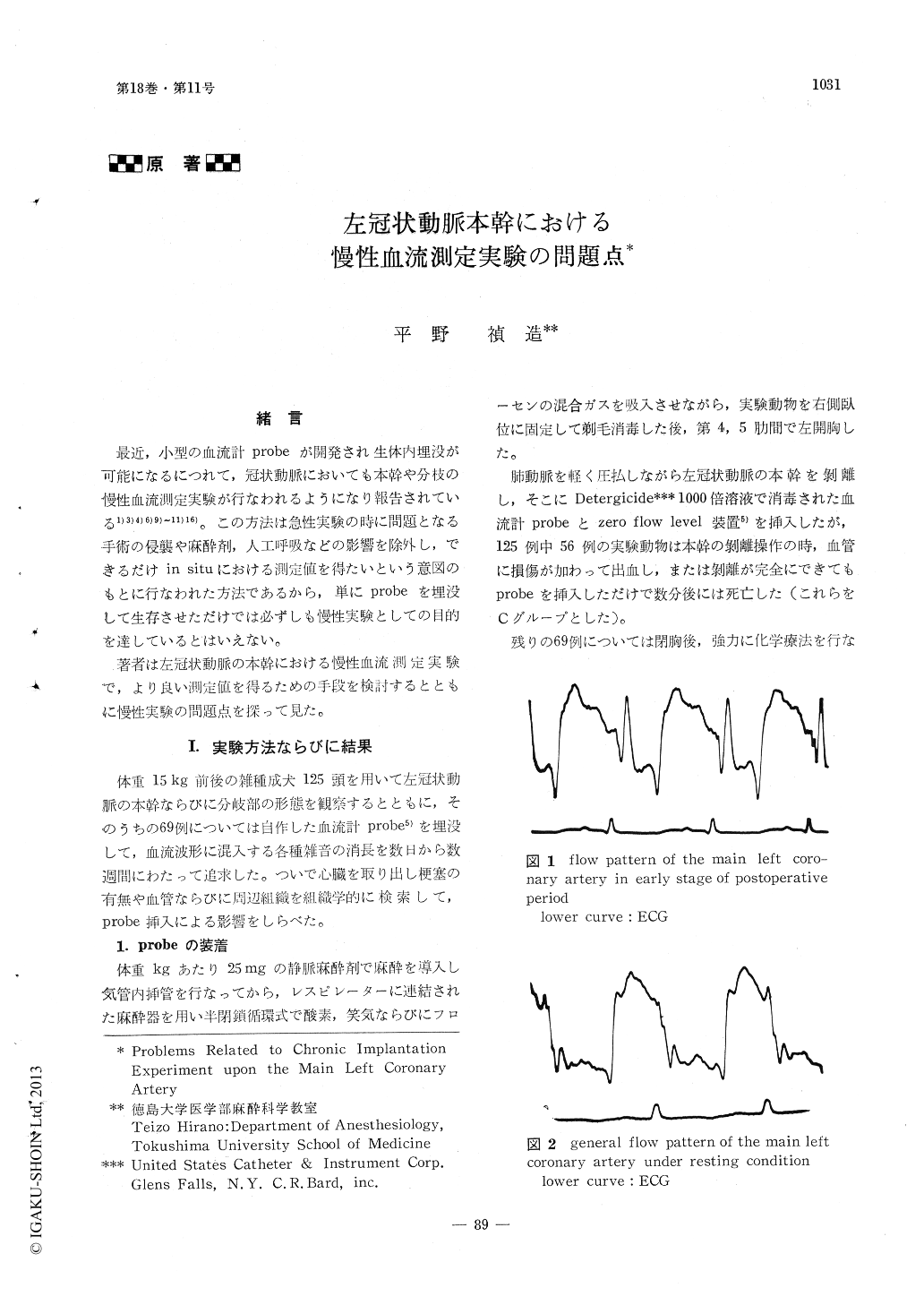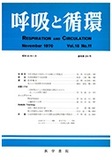Japanese
English
- 有料閲覧
- Abstract 文献概要
- 1ページ目 Look Inside
緒言
最近,小型の血流計probeが開発され生体内埋没が可能になるにつれて,冠状動脈においても本幹や分枝の慢性血流測定実験が行なわれるようになり報告されている1)3)4)6)9)〜11)16)。この方法は急性実験の時に問題となる手術の侵襲や麻酔剤,人工呼吸などの影響を除外し,できるだけin situにおける測定値を得たいという意図のもとに行なわれた方法であるから,単にprobeを埋没して生存させただけでは必ずしも慢性実験としての目的を達しているとはいえない。
著者は左冠状動脈の本幹における慢性血流測定実験で,より良い測定値を得るための手段を検討するとともに慢性実験の問題点を探って見た。
Problems related to the method of study on the coronary circulation were thoroughly in-vestigated and discussed in the paper, with special reference to the chronic implantation experiment.
The study was carried out in 125 healthy adult mongrel dogs.
The mode of ramification of the main left coronary artery more or less varied in each cases and was roughly classified into three groups. The type was proven to affect the possibility of success of the chronic experi-ment.
In the first group, consisted of 56 canines, the main left coronary artery averaged one millimeter in length and divided into two branches, circumflex and anterior descending, thereafter. The septal artery of these dogs arose from the main trunk or the bifurcation of the trunk, and was apt to be injured by even a gentle application of the flow probe tothe trunk with the group.
In 38 animals of the second group, the cir-cumflex as well as the anterior descending branches originated independently from the aortic wall, and the septal artery from the anterior descending, thereafter. The type of ramification was also shown to be inadequate for the implantation experiment as the most animals died of either coronary rupture, thrombosis or extensive myocardial infarction, a few days postoperatively.
The last group, in which 31 cases were in-cluded, used to possess a relatively long trunk of the left coronary artery, 3 to 4 mm in most cases, and was thought adequate to apply the flow probe around the trunk for long period. The results obtained were satisfactory.
As was described above in details, only 31 out of 125 animals (25%) were applicable for the chronic implantation study from the stand-point of anatomy of the left coronary artery. The third group was exclusively used for the experiment. The animals were allowed to re-cover, and observations on the coronary hemo-dynamics were started after the animals re-surne their activity and looked capable of ef-fort nearly as intensive as before surgery.
The blood flow patterns observed with those chronically implanted animals following suf-ficient recovery were essentially identical with which has been described elsewhere, and considered typical flow pattern of the main left coronary artery. An augmented systolic coronary flow observed during an early period of recovery gradually declined as the animals resume their activity. It seemed rather tem-porary reactive changes elicited by pain of the wound. No electrical noise was found in the flow rate curve.
One to two weeks after operation, the dogs were killed and autopsied. Serial sections were made of the coronary arteries and im-plantation site with particular emphasis on the degree of the injury of the pericoronary nerve fibers, and concluded there were a few morphologic alterations of the nerve cells and vessels in all dogs.
With regard to the chronic experiment, the author felt the influences of the transducer on the coronary artery were fairly extensive.

Copyright © 1970, Igaku-Shoin Ltd. All rights reserved.


